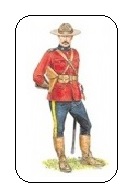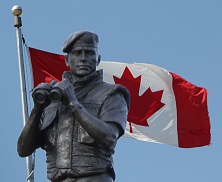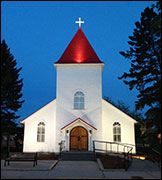True and Fascinating Canadian History
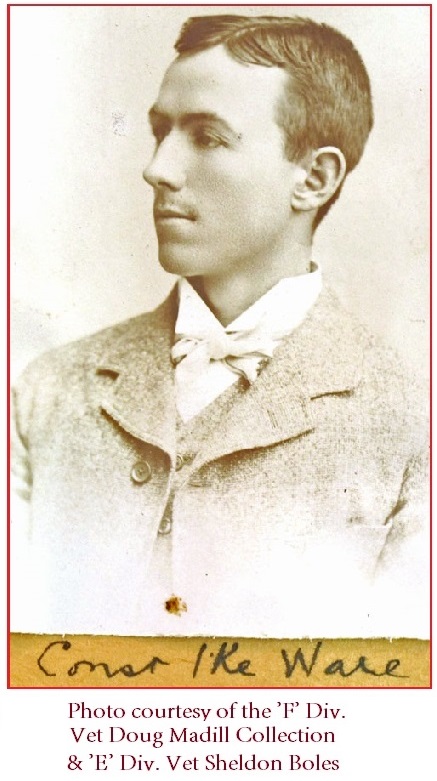
The Mystery Of The Constable
Who Clothed As A Clergyman
by J. J. Healy

Today, it is nigh impossible to keep up to the fads whether they be custom or design. Every moment can leave one confused, befuddled and betwixed. It's no wonder that Vets of a certain age wake up disgusted or more tired. Take for instance, the clothing rituals of a certain non-chalant, indifferent appearing sect of contemporary youth -- the wide open leg strut, the slow moving gait which accompanies beltless, low slung, loose fitting blue jeans which expose too much private under apparel.
Police officers traced the jean fad to its origins in prison where belts were prohibited for fear they be used to harm or hang oneself.
But, the whole clothes affair with youth is not all dismal -- styles ought to be kept in perspective. In spite of the old adage, 'Clothes Maketh the Man', one never fully knows the true quality of a person or their heart by the clothes they wear. Christ and His Apostles pop into mind. And Aristotle and Plato. And afterall, I do recall the heady days of the 1960's and 70's and this very surprising incident on my beat.
I peeked at notebook #51 for this reminder -- on one particular early summer morning in 1970 while checking wayward kids on a beach, I awoke a young man dressed like a hippy only to find out that he was a drug member who had been imported for an investigation. He was successful in his role by the unkept clothes which he wore. He and I kept in touch and over the years, he rose to a prominant position in the RCMP. Today, he keeps fit by giving ski lessons and his new ski outfits are the envy of others on the slopes. If asked, he might respond with, 'Life would be boring without diversity, colour and new fashions.'
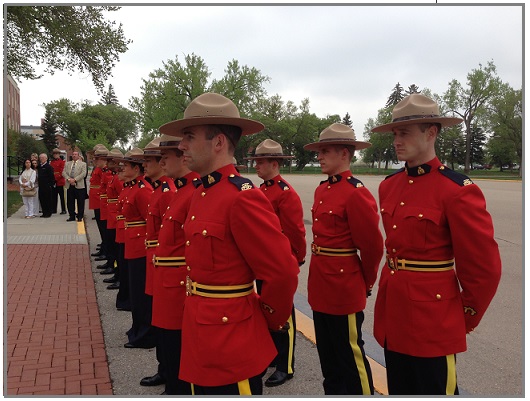
The point is simply this. Police officers, on the one hand, are experts at perceptive reasoning especially on the street. The experienced police officer can add up the variables in a situation instantly and interpret the total -- it might spell imminent danger. On the other hand, however, police officers sometimes have difficulty communicating with kids or accepting their expressions of freedom, new trends or clothes which are a wee out of the ordinary. Meanwhile, there are far greater problems facing the world than clothes. In 'The Mystery of the Constable Who Clothed as a Clergyman' it's not only the constable's unusual wardrobe that has come to our attention. If we are willing to accept change, perhaps there is a lesson for all police officers in the story.
Most Canadians support the RCMP and the difficult kinds of tasks which they must perform including sensitive investigations. But, other Canadians say that the RCMP is not a choir of angelic purists when some of their actions are closely scrutinized – barn burning in the 1970’s is often mentioned. Still others claim that the RCMP has always had a few bad apples and the reputation of a few has made it difficult for all the good ones. In 'The Mystery of the Constable Who Clothed as a Clergyman', Constable Ware worked his charm on both sides of the Canada/US border – he acted as a police officer on the Canadian side and as a parson on the other – essentially he switched his regular uniform for another -- thus giving an early definition to the phrase ‘Free Trade’.

Canadian history clearly spells out that the early days of the Force were not all entirely musical. There were cases of political interference, feuds arose over funding and recruiting standards were not firm. Nevertheless, the vast majority of the early NWMP recruits received praise for the way in which they helped to peacefully settle the Canadian west. Several members lost their lives; Constable John Nash, Constable George Mahoney, Constable Marmaduke Graburn to name but three. Reg.#983, Constable W. I. Spencer was shot and wounded while Cst. Claudius S. Hooley and Cst. Adam Wahl were drowned. Canadians can look at the courageous acts and sacrifices of these early NWMP and others and be justifiably proud.
Yet, there were also a few bad apples. Sure, they could ride a horse but their true dedication was suspect and their kit, clothes and their deportment were surprisingly poor. In 1892, Reg.#1227, Constable John Deans, was sanctioned for leaving his kit in an untidy condition and for improperly hanging a harness in the stables. Reg.#1296, Constable Thomas Pinnell was found to be improperly dressed. Reg.#1287, Constable Alfred McKenzie was found to be under the influence of liquor [in uniform] while on duty, Reg.#1099 persistently talked while on Parade, Reg.#1164, Elliott struck a match to light his pipe which caused a fire and destroyed the tent. And finally, Reg.#1300, Percy Rough sold his buffalo coat to a civilian and took a second one for himself from QM Stores. Although rules and regulations were tough, internal investigations were kept busy.
One of the most frequent patrons to Service Court was Reg.#3103, Walter Albert Ware – a constable who apparently enjoyed setting his own rules and he did so by opting out of one profession and side stepping into another. Constable Ware’s early days are as vague as the day that he decided to switch occupations from police officer to clergyman. It was all about convenience.
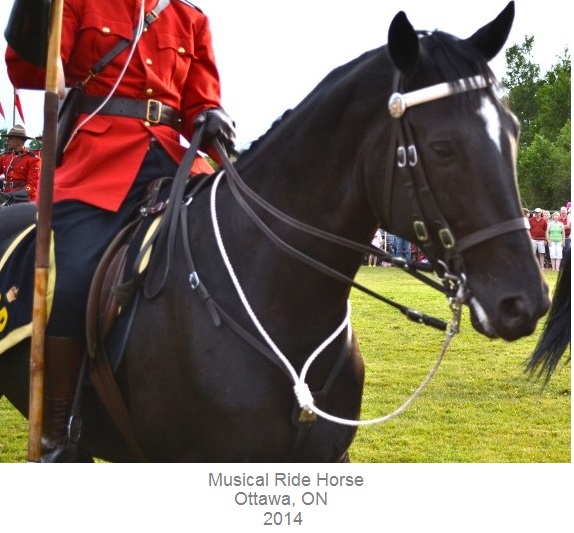
No one is sure where he was born, but Constable Ware joined the NWMP in late 1894. It’s known that he was not accustomed to discipline as he had several close shaves with the Sergeant Major whose job it was to maintain order. Constable Ware’s rap sheet was as unusual as it was lengthy. Otherwise, it spelled classic trouble.
Beginning in early 1895, Constable Ware was charged in Service Court seven times; twice for ‘being absent from stables’, twice for ‘kit in dirty condition’, once for ‘neglecting to hang a harness, once for using ‘improper language to the Sgt’, and once for ‘neglect to replace a government axe’. There seemed to be little cure for Constable Ware and little that could be done. For each offence, his sentences ranged from a scolding to a small fine. It’s unlikely that any Commissioner would have chosen him for the Chaplaincy Program. But, Constable Ware had not served up his final card – in 1898, he deserted the NWMP while on leave from Lake Bennett in the Yukon and carried with him a large sum of money entrusted to him by a friend. But, that’s not all.
A year or so later, information reached the ears of the NWMP that Constable Ware was holed up in Leeds City, South Dakota posing as clergyman. Few would have suspected that he could be a Yukon police officer one day and a South Dakota clergyman the next. It’s not known for sure, but one can speculate whether or not Constable Ware’s change in profession made him any more successful.
For one thing, people expect office holders to be trustworthy. Canadians place their trust in a police officer especially when he or
she is fully clothed in the widely acceptable uniform for the role. The cap, badge, gun and other apparel on the belt does lend
confidence in the mind of observers that the wearer is a police officer. And by extension of trust, one is guided by the police
officer’s instructions.

Constable Ware’s actions aside, there is no doubt that even today clothes do send an important signal. Convention holds that a smartly dressed person thinks more clearly and acts with a higher degree of professionalism. It is said that a man dressed in a dark blue suit can be assured of entry into the House of Commons on most days. Dark blue is also the preferred colour for an appointment at the White House. In the Supreme Court, black robes are strictly enforced and the same rule applies on both sides of the 49th line. And in Rome, if one spots a man all dressed in white wearing a zucchetto to match, alot of people trust his word. In short, every profession is known for its identifiable code of dress which adds legitimacy and authority to the job.
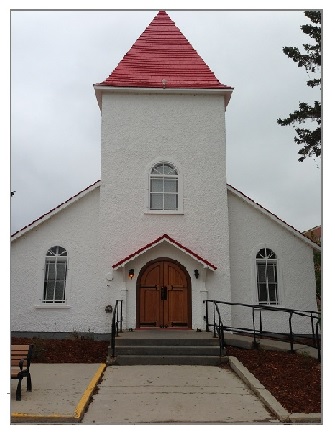
Then there are credentials. On the one hand, one accepts, for instance that a police chaplain has the prerequisite education for his or her role. In simple terms, a chaplain acts as a moral guidepost for his or her flock and the congregation accepts that they are knowledgeable and sure about social codes of behaviour as they relate to religion. On the other hand, Constable Ware was known to be practicing cleric responsibilities within a short time after desertion from the NWMP. One might presume that he had not been properly schooled in the important areas that stick religion together, namely; theology and philosophy. One can only imagine the chaos which Constable Ware might have created in his adopted role as a clergyman.
Suppose your daughter is courted by a young farmer from South Dakota and they decide to get married. One of the rituals is to find a clergyman for the ceremony. The young farmer mentions a family friend who just happens to be a clergyman. They get married and you are blessed with a large number of grandchildren. That's great. Years later, you’re invited to an Officer’s Mess Dinner and your table companion is Superintendent Steele. After his lites his cigar, he tells a yarn about Constable Ware lifting some gold and rediscovering himself as a holy man in South Dakota. You realize that the clergyman at your daughter's weddng was phony and as empty as a Bre-X bank account. No man is brave enough to tell that kind of news to a daughter. Or to be more truthful, there are some things a husband selects not to share with his wife or his daughter. But, Constable Ware did leave us with a lesson or two.

First, it is worthy to be reminded that Constable Ware’s behaviour was an exception to the rule. Acts of bravery defined the NWMP. His betrayal to the NWMP was not common – nor is cheating common within the RCMP today. Acts of untrustworthlyness are simply not tolerated.
It would be simple for Constable Ware to clothe himself as a clergyman, but his behaviour in the parson role might raise suspicion. It often does. And whether or not he found sufficient divine inspiration to preach the good word also remains a mystery. One could surmise that it would be easier for one to remain a police officer and to leave the teachings and interpretation of the Good Book up to the educated experts.
In the end, it all comes down to trust. By far, the greatest number of people one meets are honest and fair minded. Poor applicants for the RCMP are weeded out and successful cadets move on to rewarding careers in the Force. They quickly discover that their Red Serge stands for justice, fair play and tolerance -- these qualities are important in the minds of Canadians. Canadians also are a fair minded and generous lot - trespasses by the RCMP can be forgiven provided Canadians also see some evidence that corrective measures are in place and that the RCMP is performing at its best. One cannot ask for more than that.
And finally, one can reflect back on little stories about life once recited by our teachers -- remember the one of the fox dressed as a sheep?
Reporting from Fort Healy,
J. J. Healy

Baker Lake, Ohio, USA.
His grave was found by Merle Armstrong. Vets London, ON.
